[Joint TG 4.2 & TG 4.3 Seminar] Tuning the Binding Selectivity in Molecular Recognition, Targeting, and Activation / Shaping Active Matter: Symmetry, Confinement, and Effective Interactions
[Joint Seminar in Biophysics of TG 4.2 and TG 4.3]
Two scientists from CECAM (Centre Européen de Calcul Atomique et Moléculaire, https://www.cecam.org/), Prof. Jure Dobnikar and Prof. Ignacio Pagonabarraga, will visit NCTS on November 24 and deliver two talks.
Host: Dr. Jer-Lai Kuo (AS) / Prof. Cheng-Hung Chang (NYCU)
Date: Monday, November 24, 2025
Place: NCTS Physics Lecture Room (R307), 3rd Floor, Cosmology Hall, NTU
Time: 10:00-11:00
Speaker: Prof. Jure Dobnikar (CECAM / Chinese Academy of Sciences)
Title: Tuning the Binding Selectivity in Molecular Recognition, Targeting, and Activation
Abstract:
A prerequisite for functioning of vital biological processes is the ability to recognize specific conditions or situations and respond when (and only when) it is needed. This is particularly obvious in the processes involved in the immune response where failure to respond to an attack can be life-threatening, but so can a wrong response (autoimmune disorder). On a molecular level this means that living systems must be able to respond to the presence of specific molecules in an on-off manner, e.g., triggering a sharp response when external ligands are presented above a certain threshold density, but no response when they are not. As demonstrated by Martinez-Veracoechea and Frenkel studying binding of ligand-decorated probes to receptor-decorated surfaces [1], probes with ligands that form very strong bonds cannot be selective, while those with multiple ligands each forming a weak bond can exploit the combinatorial entropy of binding to “super-selectively” distinguish between “target” and “non-target” surfaces. Here, I will present our theory of optimal multivalent binding for targeting cells with arbitrary receptor composition [2], which we further applied to design a new method for detecting microbial genome [3]. Moreover, we showed that the multivalent binding theory also underlies the activation of immune system response and can regulate the onset of autoimmune disorders [4]. In our recent study [5], we explored how tuning the inter–receptor attraction can enhance or suppress cellular response to external agents. In the presence of multivalent ligand–coated particles, the cells that operate close to critical conditions can switch receptor-clustering on or off in an almost stepwise fashion by small changes (less than kBT) of the inter–receptor attraction. This in turn provides a precise control over binding of multivalent external agents to their membranes. Based on our results, it is tempting to speculate that the immune system may tune the receptor attraction to activate or de-activate immune cells, if external ligands are presented above or below a certain threshold density. Our results highlight that universal physical mechanisms combining macromolecular assembly and statistical mechanics of multivalent binding can transform the non-specific (usually electrostatic) interactions into specific interactions that can efficiently control the processes in biomolecular systems.
References:
[1] F. J. Martinez-Veracoechea, D. Frenkel, PNAS 108 10963 (2011)
[2] T. Curk, J. Dobnikar, D. Frenkel, PNAS 114 7210 (2017);
[3] T. Curk et al., PNAS 117 (16) 8719 (2020)
[4] N.W. Schmidt et al., Nature Materials 14 696 (2015)
[5] Z. Xie et al., PNAS 122 (7) e2417159122 (2025)
Time: 11:00-12:00
Speaker: Prof. Ignacio Pagonabarraga, (CECAM / University of Barcelona)
Title: Shaping Active Matter: Symmetry, Confinement, and Effective Interactions
Abstract:
Active matter systems, composed of self-driven entities that continuously consume energy to generate motion or mechanical stresses, represent a fundamental departure from the principles of equilibrium statistical mechanics. Their collective behavior arises from a complex interplay between direct interactions, hydrodynamic couplings, and the self-consistent evolution of the medium in which they are embedded. Understanding the mechanisms underlying pattern formation, self-assembly, and emergent order in these systems poses profound theoretical and conceptual challenges for nonequilibrium physics.
I will discuss the role of symmetry and confinement in the effective interactions that govern the organization of active systems across scales. Using minimal dynamical models, I will show that the symmetry of self-propulsion plays a decisive role in the nature of emergent structures in suspensions of self-propelled particles and in complex environments.
I will further address the role of soft confinement, such as droplets, vesicles, and phase-separating mixtures, in shaping the collective behavior of active particles. Active stresses within such environments compete with interfacial tension and other restoring forces, giving rise to enhanced interfacial fluctuations, dynamic morphologies, and, in some regimes, the stabilization of active emulsions with well-defined length scales. These phenomena illustrate how activity can arrest coarsening, control morphology, and promote the coexistence of nonequilibrium steady states.
Taken together, these results highlight how fundamental symmetry considerations and mechanical constraints can be used to rationalize and predict the emergent organization of active systems. They also point toward a unified framework for understanding the self-organization of active materials—biological or synthetic—through the balance of internal activity, confinement, and effective interactions.
References
[1] J. Diaz, I. Pagonabarraga, ‘Activity-driven emulsification of phase-separating binary mixture’, Phys. Rev. Lett. 134, 098301 (2025)
[2] J. Codina, B. Mahault, H. Chat´e, J. Dobnikar, I. Pagonabarraga, X.-Q. Shi, ‘Small obstacle in a large polar flock’, Phys. Rev. Lett. 128, 218001 (2022)
[3] H. Massana-Cid, D. Levis, R.J. Hernandez Hernandez, I. Pagonabarraga, P. Tierno, ‘Arrested phase separation in chiral fluids of colloidal spinners’, Phys. Rev. Res. 3, L042021 (2021)
[4] J. Fries, J. Diaz-Branas, M. Jardat, , I. Pagonabarraga, P. Illien, V. Dahirel, ‘Active droplets controlled by enzymatic reactions’, J R Soc Interface 22, 20240803 (2025)
[5] P. Digregorio, I. Pagonabarraga, F. Vega Reyes, ‘Phase separation in a chiral active fluid of inertial self-spinning disks’ (submitted)


